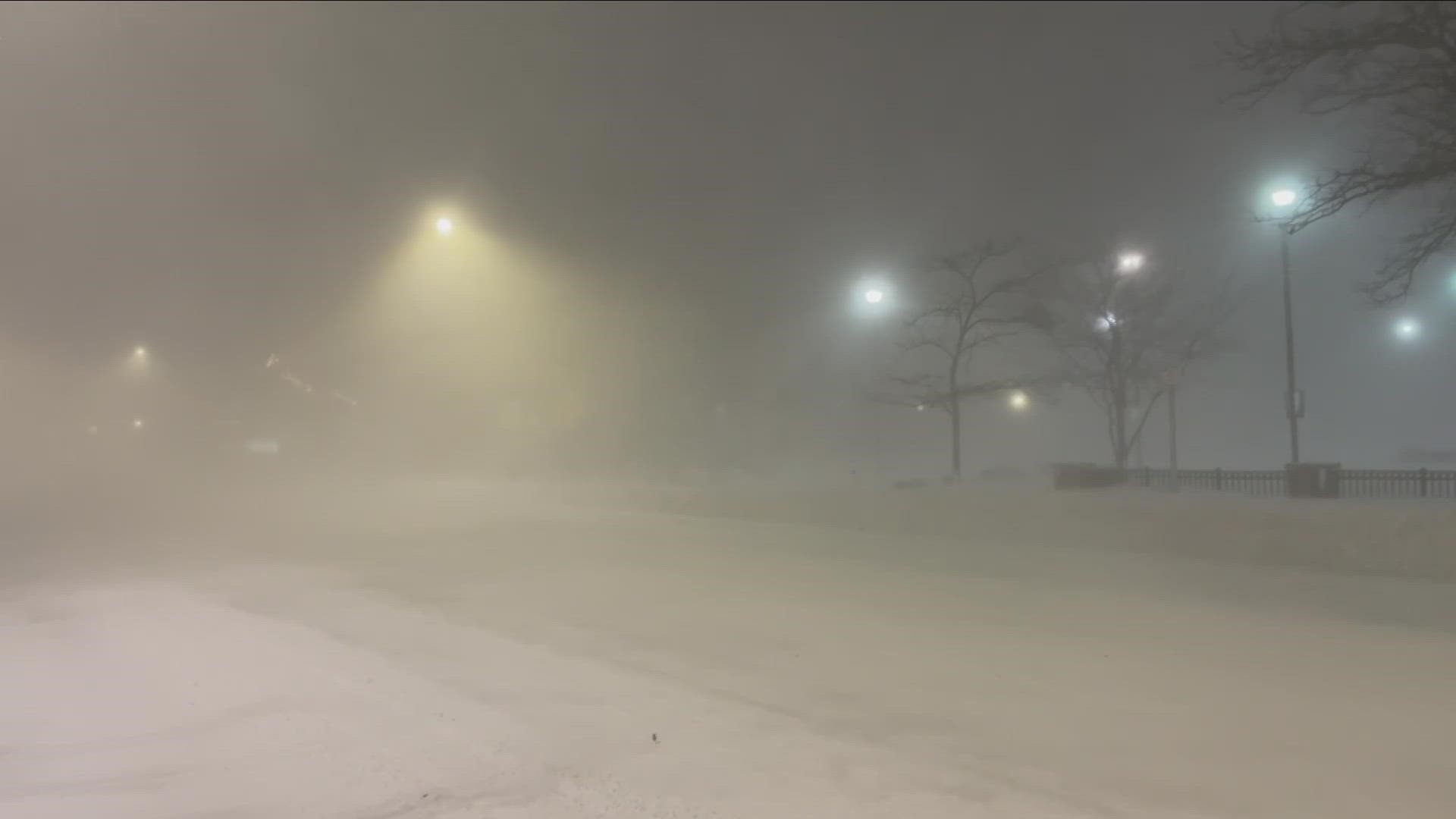BUFFALO, N.Y. — A little more than a month ago, Western New York was digging itself out from a historic blizzard.
A blizzard that claimed the lives of 47 members of the western New York community.
Erie County, and even more granular the city of Buffalo, rested the majority of those deaths on its shoulders. 46 in total across the Erie County.
Since the end of the storm, 2 On Your Side had requested to interview the people the commissioners responsible for some of the decision making at the emergency operations center in Cheektowaga.
Homeland Security and Emergency Services Commissioner Dan Neaverth Jr and Public Works Commissioner Bill Geary agreed to an interview.
2 On Your Side met Neaverth and Geary at the Aurora DPW facility in West Falls on January 26th.
The Driving Ban
Erie County announced a driving ban around 8:50 AM on December 23, 2022. By that point there were blizzard conditions across Western New York, but particularly nothern Erie County was getting battered.
The driving ban announced would go into effect at 9:30 AM.
WGRZ asked Commissioner Neaverth about the timing of the driving ban and whether one should have been established before 9:30 AM.
"There was a discussion about when we were going to do travel bans," Neaverth said. "The ultimate decision on that came down to the timing of when the anticipation was for the storm itself."
Neaverth said the storm hit an hour or two earlier than they anticipated.
"A lot of different things that are bounced around throughout the course of the lead up," Neaverth said. "But to but to armchair quarterback that afterwards, that's kind of one of my pet peeves."
The National Weather Service started using language like generational and unprecedented in its forecasting as early as December 20th. WGRZ asked Neaverth if the storm hitting an hour or two early really made a different, if the forecasting for an evening commute home was always consistent, and why not initiate a ban before the storm starts so employers don't mandate employees to report to work.
Specifically, WGRZ asked Neaverth if a driving ban should have gone into effect at 7 AM, before the storm started.
"I think the there's the understanding to that there are people that work overnight shifts that there were people that will be returning home," Neaverth said. "There's a lot of factors that go into not just the everybody works nine to five, so I think that there's a balance there."
Neaverth also said whenever there is a driving ban, there needs to be consideration that the county is essentially shutting down commerce, including international travel on the Peace Bridge.
"There's a lot of thought process that goes into that ultimately, one person is the person that signs off on that and pulls the trigger on that," Neaverth said.
That person to pull the trigger on the driving ban is County Executive Mark Poloncarz.
On December 28th, Poloncarz said he didn't know if initiating a driving ban earlier would have made a different, but took full responsibility for the decision.
Pulling Crews
By Friday afternoon, conditions during the storm worsened to the point it was unsafe for crews to be on the road trying to keep them clear. The winds were so intense, even if a plow made it down a road, snow drifts were quickly rebuilt.
WGRZ asked DPW Commissioner Bill Geary to explain how the decision was made to pull crews, and whether it was a specific metric that has to be met in order for that to happen.
"It's communications all the way from the person sitting behind the wheel and that plow truck," Geary said. "If they get in a position that they're unsafe, we definitely don't need to go rescue the rescuers."
Geary says that conditions in the first-ring suburbs were particularly bad by early afternoon.
"They couldn't even see the windshield wipers on the plows," Geary said. "Then added in there were obstacles during that period of time, whether it be downed power lines, trees, other vehicles."
"It comes down to the operator to how comfortable are they willing to go, we don't want to push the limitations to to the farthest end," Geary said. "Then we're dealing with more recovery than just dealing with the snow."
As the death toll continued to rise after the storm, Geary said there was a lasting impact and trauma for those DPW crews that were in the thick of it.
"Some of the crews still feel like if we would have just pushed a little bit more could we have saved somebody else," Geary said. "But those are the honest things that we have to look at with putting men and women from the department out in harm's way."
Accountability
The 2022 blizzard turned out to be the deadliest weather-related event since the Blizzard of '77, and the deadliest incident in Erie County since the crash of flight 3407.
2 On Your Side asked Neaverth and Geary what accountability there would be at the county level.
"As far as accountability, I think every one in that emergency operation center, people that actually were there in the trenches doing it, I think their accountability is knowing that they did everything that they possibly could for those people under the circumstances, and under the weather," Neaverth said. "I can tell you as a person who was there and saw people that were doing everything that they possibly could, that to me is accountability."
"There's going to be times where people want to go out or don't want to evacuate a certain area," Commissioner Geary said. "We've seen it in Hoover beach time and time again, if you want to stay there, you're taking your life in your hands because we can't risk sending in firemen and police as well as the public works to get into those situations."

